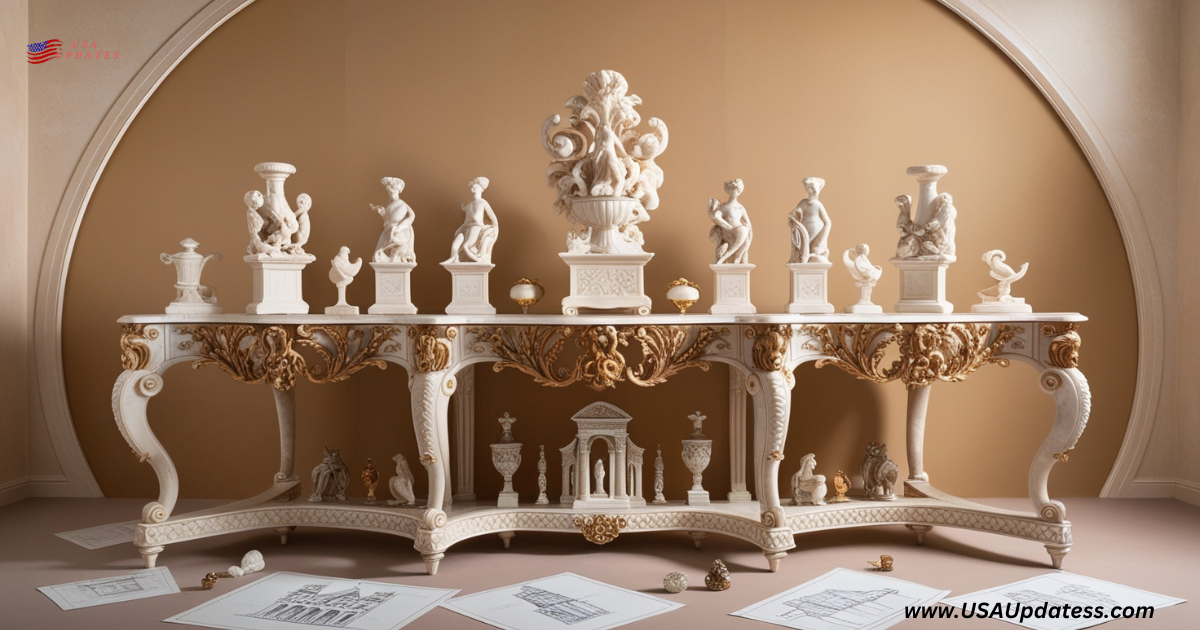
what is the difference between ivory and white alabaster?
Introduction
People choose alabaster and ivory when they desire something that will contain some real beauty in it due to making statues, home decorations, or even a building accent. Though the two products are rather alike in many aspects, they look completely different, and what they are used for, and also their price values. Knowing this will make a person decide which one to use in case he or she wants something done with their art or for home decoration purposes. This is what the following discussion will talk about-that what is the difference between ivory and white alabaster, their unique qualities, their place of origin, and the things they are used for.
Composition and Origins of Ivory and White Alabaster
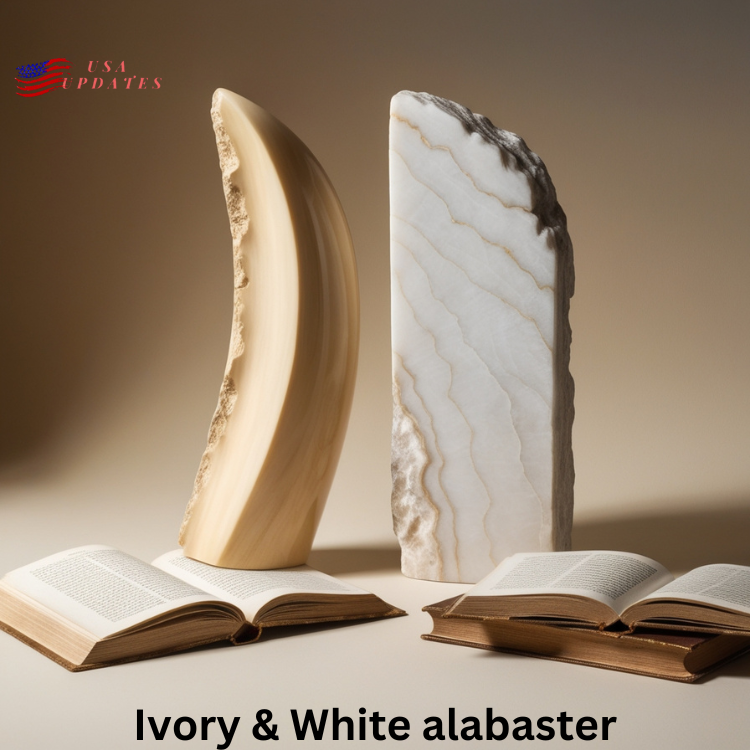
Ivory
Other animals with the ability to produce usable tusk or teeth from the ivory, include mostly elephant, but also walrus, hippopotamuses, and narwhal. It is thick in nature and organic composed entirely of dentin, one tissue in teeth. Therefore, ivory has a moral effect associated with its origin. For legal effect, this affects the whole process that starts from when it’s initially extracted, processed into form, and its use by consumer. Its trade and use are restricted globally to conserve species from extinction
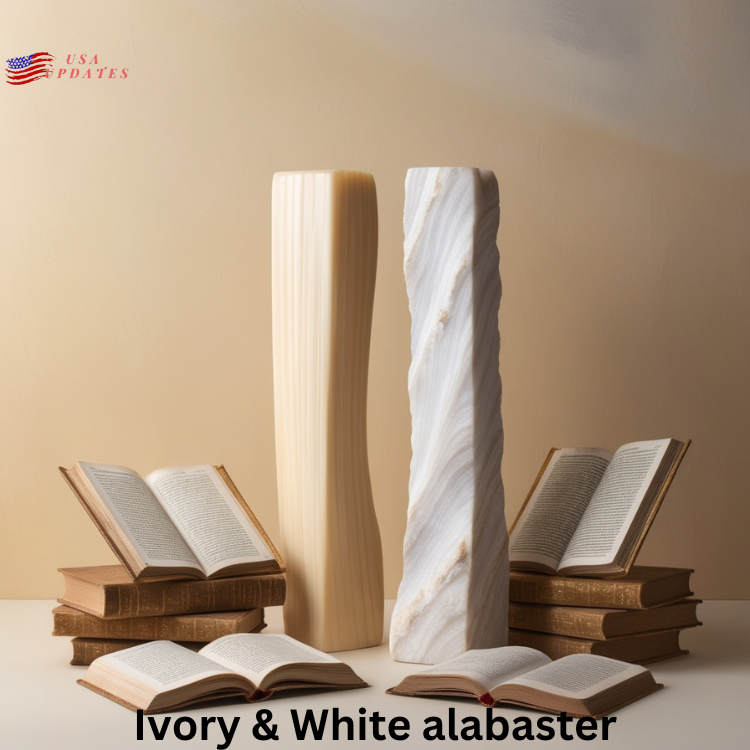
White alabaster
On the other hand, but white marble is a mineral that is a type of gypsum or calcium sulfate. You can find it in nature or dig it from quarries. Alabaster is a mineral, not a living thing, so it does not come from animals like ivory does. It is soft-textured, which can be easily shaped and polished. Since its earliest period, alabaster has been used for carving and making. More forms are available than ivory, and it has not been made of animals, so this is more environmentally friendly material.
Differences in Appearance
What is the difference between ivory and white alabaster. Take a look at how each material looks.
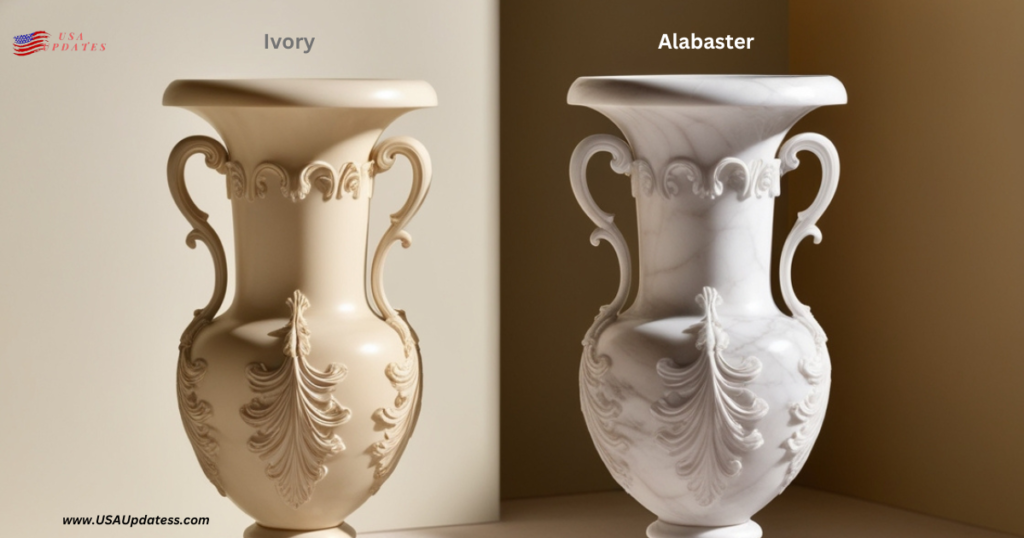
Ivory
Ivory has a clear, bright, off-white color that gets a little darker over time. This substance’s color can range from creamy white to a little yellow or brown. The smooth, shiny finish of its fine, natural grain makes it look even more expensive.
White alabaster
This stone is milky translucent in appearance. Generally, it is white pure color but can have streaks or veins of color that range from gray, pink, and cream due to the minerals forming it. White marble said polish soft shine not like ivory. Its ability to let light pass through makes it one of the favorite materials in statues, lighting fixtures, and decorative accents. When backlit, the light achieves an ethereal glimmering effect.
Strength and Durability
When you look at how long and how hard ivory and white marble last, you can see What is the difference between ivory and white alabaster.
Ivory
It will be better to use ivory instead of alabaster for designs that have more details, musical instruments, and other things that have to be strong. Because it is harder and more durable, it lasts much longer. Its thick structure lets you get very precise details without worrying about its breaking or chipping. With proper care, your things made of ivory can live for hundreds of years
White alabaster
White marble is quite soft but scratches and chips easily. It falls between 2 and 3 on the Mohs scale, making it much softer than ivory. Artists can easily mold it into intricate patterns, but they should handle it carefully and place it in areas with little foot traffic to avoid damage. Because alabaster is highly brittle, designers should use it mainly for items that serve as decorations and are unlikely to be touched frequently.
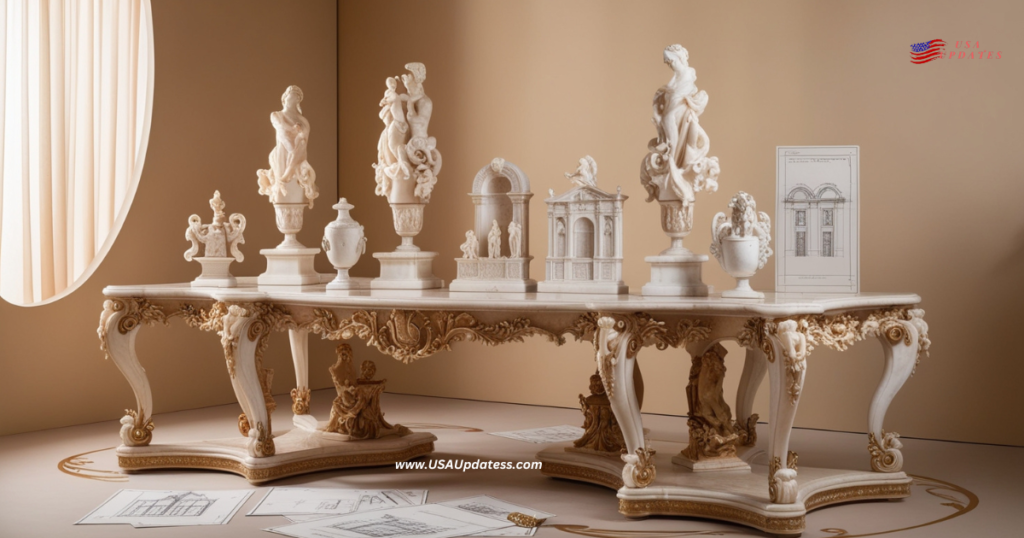
What Ivory and White Alabaster Are Used For
If you want to use ivory or white alabaster for different things, you have to look at their individual features. Here are some common ways people use each material:
Ivory: Things like earrings and pendants pieces of sculpture and small models. The piano keys and other instruments. People have carved things like figurines and holy images.
The white alabaster: Vases, lamps, and light holders for decoration Sculptures and busts for decoration cladding for walls and building details small things for the home, like bowls and jewelry boxes. Because it is see-through, white marble is a great choice for lamps and windows and other things that need to spread light around. On the other hand, ivory is better for things like jewelry and holy icons that need to be very precise and last a long time.
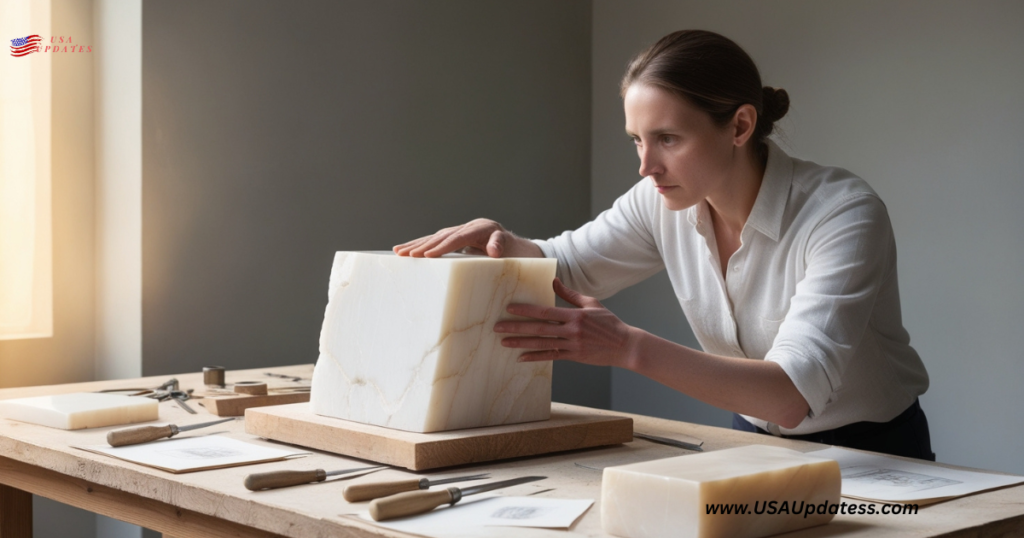
Key Differences Between Ivory and White Alabaster
Here are some of the main ways that ivory and white marble are different:
Source
- People use animal tusks and teeth to make ivory.
- White alabaster is a mineral that forms naturally.
- It is a type of gypsum or calcium sulfate.
How they look
- Ivory has a smooth, shiny, warm color that ranges from off-white to yellow.
- White alabaster is see-through, milky white, and may have lines. It has a soft sheen.
Hardness and How Long It Lasts
- Ivory is harder, lasts longer, and is less likely to break.
- White alabaster is softer and more likely to chip and scratch.
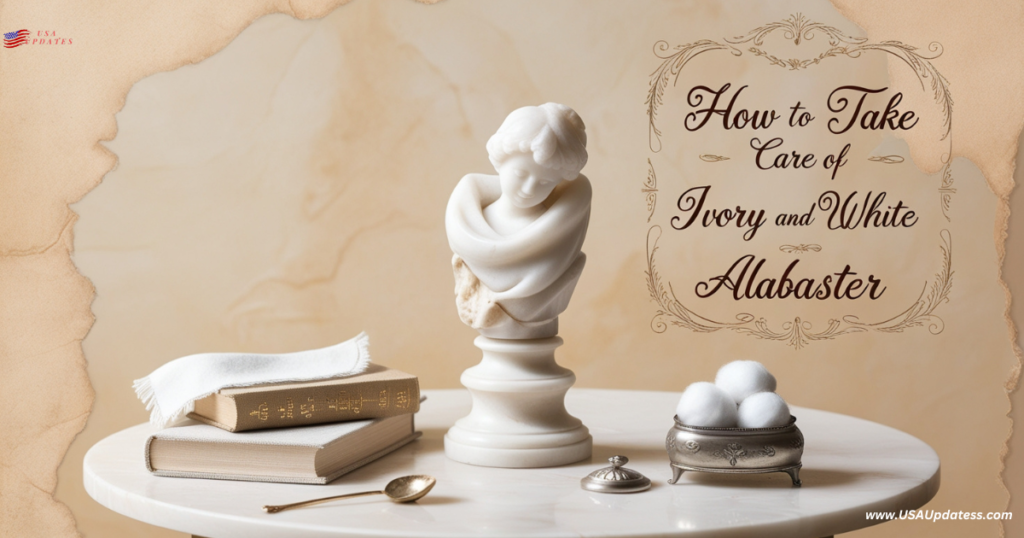
How to Take Care of Ivory and White Alabaster
To maintain their beauty over time, both ivory and white marble require special care, and you must handle them properly to keep them in good shape.
Ivory
Using a soft cloth to wipe down the area often helps keep dust from building up. Stay out of direct sunlight because UV rays can turn things yellow. Keep it in a climate-controlled space to keep it from cracking when the weather and humidity change.
The white alabaster
Do not put alabaster things in damp or humid places because the stone can soak up water and change color. To prevent scratches or wear on the surface, use a dry, soft cloth to clean the marble. If you want to protect items that will experience scratches and small water damage, you might want to apply a sealer.
Pros and Cons of Ivory and White Alabaster
| Feature | Ivory | White Alabaster |
| Origin | Animal-derived, ethical concerns | Mineral-derived, no ethical issues |
| Appearance | Warm, glossy, unique grain | Milky white, translucent, sometimes streaked |
| Durability | Hard, resilient, long-lasting | Softer, delicate, prone to scratches |
| Applications | Jewelry, small carvings, artifacts | Lamps, sculptures, decorative accents |
| Maintenance | Requires controlled environment | Keep dry and clean gently |
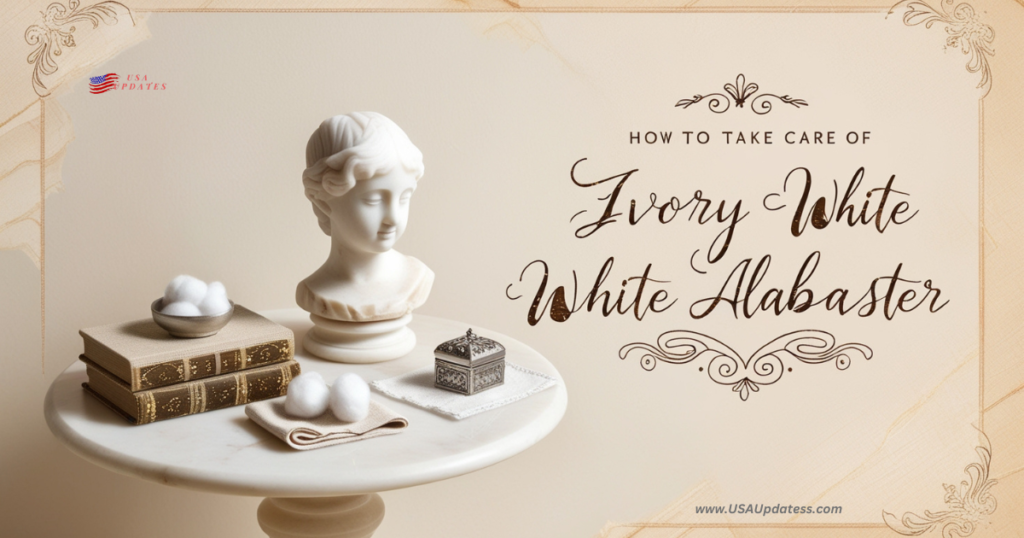
FAQs: What is the difference between ivory and white alabaster
What is the difference between ivory and white alabaster?
Ivory lasts longer and is less likely to break than white marble. Ivory is good for making detailed and long-lasting items because it has a dense structure. White alabaster, on the other hand, is softer and better for low-touch decorative items.
White alabaster lasts longer as compared to ivory?
Deriving from the tusks of rare animal species makes ivory an unsustainable material for use. As a gemstone, therefore, white alabaster indicates that it is good for the environment and does not come from any animal, which can sometimes be a concern.
That’s why the next one is the appropriate one what makes white marble transparent while ivory is translucent?
White alabaster is a form of gypsum, a mineral that has a special crystal structure that lets light pass through and gives the stone a see-through look. On the other hand, ivory appears opaque because organic materials compose it, and its thickness contributes to this quality.
It’s not ivory, but can we use white marble instead?
Yes, to create a statue and its accessories at home, people use softer alabaster. Which they consider more fragile, instead of employing ivory, similar to what artisans use for bedside lamps. As a gemstone, therefore, white alabaster indicates that it is good for the environment. And does not come from any animal, which can sometimes be a concern.
Ivory or white alabaster? Which is easier to work with?
Ivory is harder to cut than white alabaster because it is harder to scratch. As a gemstone, therefore, white alabaster indicates that it is good for the environment. And does not come from any animal, which can sometimes be a concern.
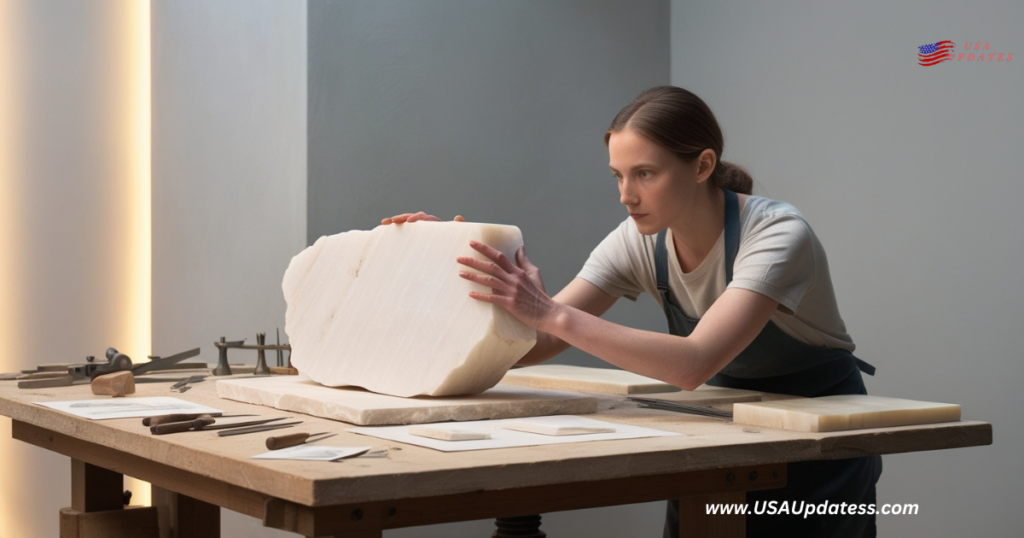
Conclusion
Anyone interested in art, decoration, or jewelry needs to know the difference between ivory and white alabaster. Ivory is strong, has a clear shine, and looks very different from other materials. But there are moral and legal issues with it. As an option, white alabaster is available, easy to work with, and good for the environment, though it has a softer structure that needs careful handling. Each material has its own beauty, uses, and benefits, so designers and customers can pick the one that fits their needs and tastes the best.Both artisans and designers still highly value ivory and white alabaster materials, whether they use them to create historical objects or modern home decor. Each creates a unique beauty and history for the things made from them.
Read more about home improvements on USA Updatess.



